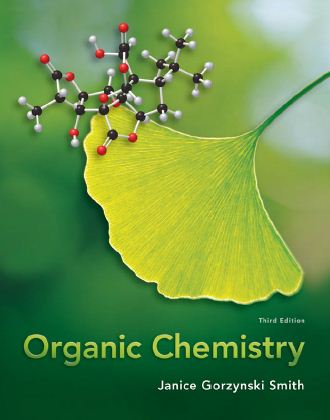

The text uses less prose and more diagrams, equations, tables, and bulleted summaries to introduce and reinforce the major concepts and themes of organic chemistry. Today’s students rely more heavily on visual imagery to learn than ever before. Style This text is different-by design.The Basic Features of Organic Chemistry Third Edition by Janice Gorzynski Smith:
ORGANIC CHEMISTRY JANICE SMITH ONLINE SKIN
Topics include the health benefits of omega-3 fatty acids, α-hydroxy acids in skin care products, drugs such as Benadryl that contain ammonium salts, chloroethane as a local anesthetic, rebaudioside A (trade name Truvia), a sweetening agent isolated from a plant source, and many others. New health-related and environmental applications are included in margin notes and problems.The depiction of enzymes as biological catalysts in Chapter 6 has been redone to use an actual reaction-the conversion of the lactose in milk to glucose and galactose. Several 3-D illustrations of proteins have been added to Chapter 28 as well. New micro-to-macro illustrations are included on hydrogen bonding in DNA (Chapter 3), the production of ethanol from corn (Chapter 9), partial hydrogenation of vegetable oils (Chapter 12), artifi cial sweeteners (Chapter 27), and insulin (Chapter 28).The interior design has been modified to tidy margins, and art labeling has been simplified, so students can focus more clearly on the important concepts in a section.Beginning with Chapter 11, there are additional multi-step synthesis problems that rely on reactions learned in earlier chapters. The majority of these problems are written at the intermediate level-more advanced than the easier drill problems, but not as complex as the challenge problems. Over 350 new problems are included in the third edition.Twenty new NMR spectra have been added in Chapters 14–25 to give students additional practice in this important type of analysis.Some mechanisms have been modified by adding electron pairs to nucleophiles and leaving groups to more clearly indicate the course of the chemical reaction. In addition, sections on splitting in NMR spectroscopy (Section 14.7) and substituent effects in substituted benzenes (Section 18.6) have been rewritten to clarify and focus the material. In response to reviewer feedback, new sections have been added on fragmentation patterns in mass spectrometry (Section 13.3) and peptide sequencing (Section 28.6).New to the Third Edition of Organic Chemistry by Janice Gorzynski Smith: Organic Chemistry is my attempt to simplify and clarify a course that intimidates many students-to make organic chemistry interesting, relevant, and accessible to all students, both chemistry majors and those interested in pursuing careers in biology, medicine, and other disciplines, without sacrificing the rigor they need to be successful in the future. I have followed two guiding principles: use relevant and interesting applications to illustrate chemical phenomena, and present the material in a student-friendly fashion using bulleted lists, solved problems, and extensive illustrations and summaries. This text is based on lecture notes and handouts that were developed in my own organic chemistry courses over my 30-year teaching career. My goal in writing Organic Chemistry was to create a text that showed students the beauty and logic of organic chemistry by giving them a book that they would use. PREFACE to Organic Chemistry Third Edition by Janice Gorzynski Smith:


 0 kommentar(er)
0 kommentar(er)
